
The world is in a hurry so of course website speed is important
15 December 2023Essentially, everyone is in such a rush they can’t even wait 400 milliseconds for your web page to load. Shocking right? That’s literally how long it takes to blink once.
So understanding what’s affecting your website speed is the first step to getting lots more traction on Google.
We’ve got all the tips to help you out including which tools to try.
Where is everyone?
You’ve crafted the perfect website layout and added meaningful content and images; you’re so excited about how your new website communicates your brand… Yet you’re not seeing the traffic you’d expected.
Visitors are leaving your site, you don’t appear in Google search results without endlessly scrolling and you just don’t know what you’ve done wrong!
It could be that your website speed is to blame.
Website speed is how quickly your website loads for users and is taken from an average of multiple page speeds. It essentially measures how long the elements on the page, such as text and images, take to fully load.
Why is website speed so important?
The more technology advances, the less patient people are with it. Research has shown that visitors are likely to leave a site if it takes more than 400 milliseconds to load. That’s the blink of an eye (literally!).
But it isn’t just about whether or not users stick around.
Google uses site speed as one of the determining factors in a site’s placement on a SERP (Search Engine Results Page). This means slow loading times will drag you down the Google results, making your site less likely to be the one people click on.
So, if enhancing your site speed contributes to your SEO (Search Engine Optimisation) it isn’t something to be ignored.
Web optimisation will improve your rankings with Google, encourage visitors to remain on your site, and help you secure more leads, all of which could lead to a boost in sales. But how do you begin this process of making your website the best it could be? Well, first you need to know the current loading speed of your site and its pages.
How to choose a speed testing tool
Most popular site speed testing tools show similar user interfaces and graphics of your results, but that doesn’t mean they all provide you with the same data. To see a full picture of your site’s loading speeds you’ll need to do your research on the tools available.
For example, you might use one tool to test your core web vitals, another to inspect your site’s waterfall chart and a third to test your site from various geographical locations.
Whichever tools you choose, stick to the testing tool commandments:
- It must serve your purpose
- It must have a clear user interface that you understand
- It must provide you with useful, actionable information
Here are some of my testing tool top picks that you might find useful.
Pingdom Website Speed Test
Pingdom provides a quick and relatively basic measurement of your site’s speed. Alongside the loading speed and other vital statistics, you’ll find an easy-to-understand performance grade and tips for improving it.
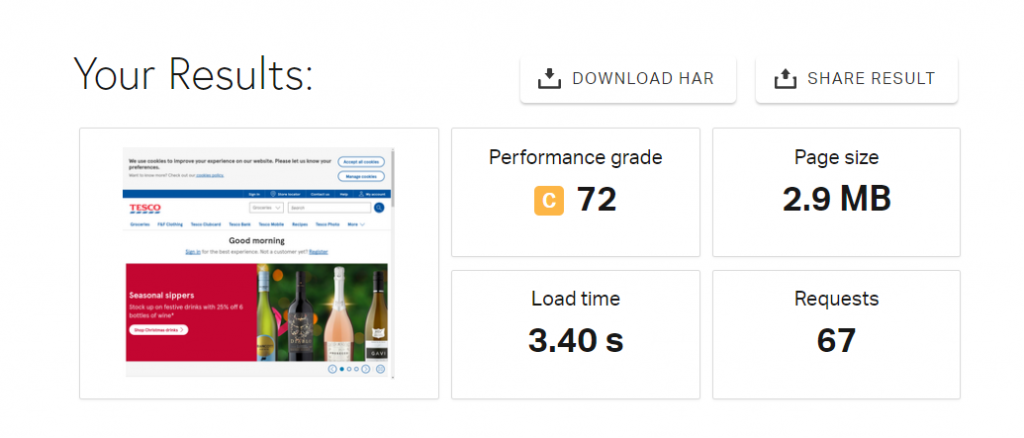
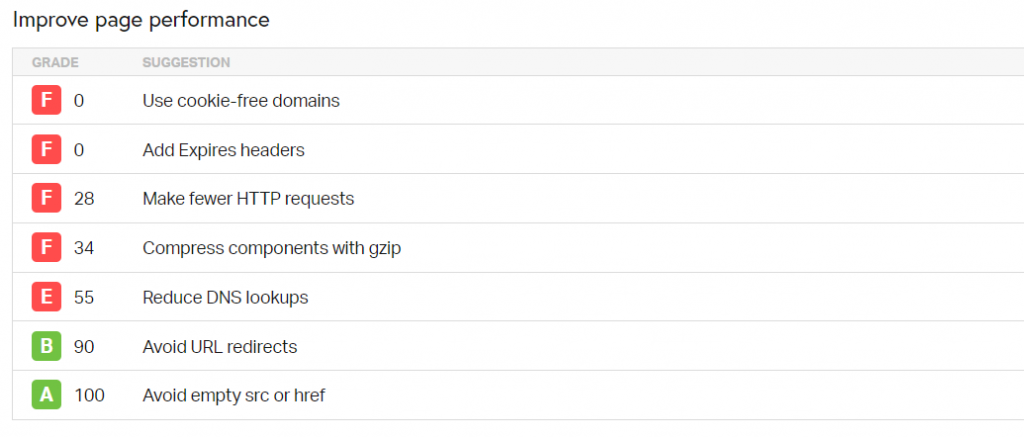
GTmetrix Performance Report
GTmetrix has a simple user interface showing an overall performance grade, core web vitals and additional information on your performance metrics and structure. You can also see a waterfall chart for your site which provides a deeper understanding of losing errors, redirections and where they point to and other actions that occur between a user and your server.
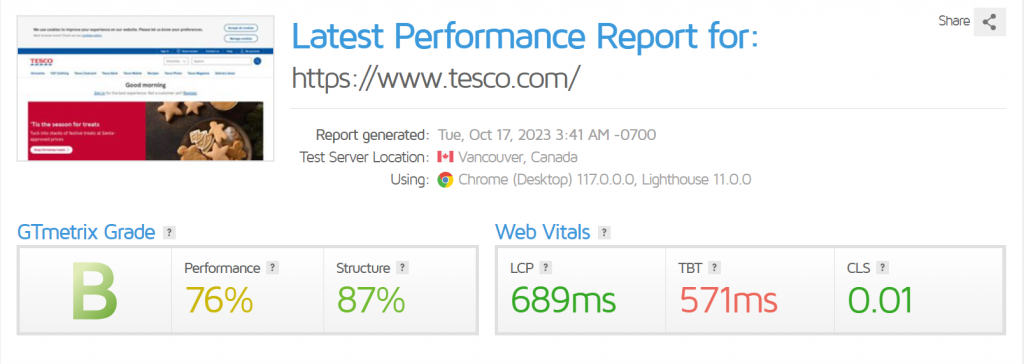
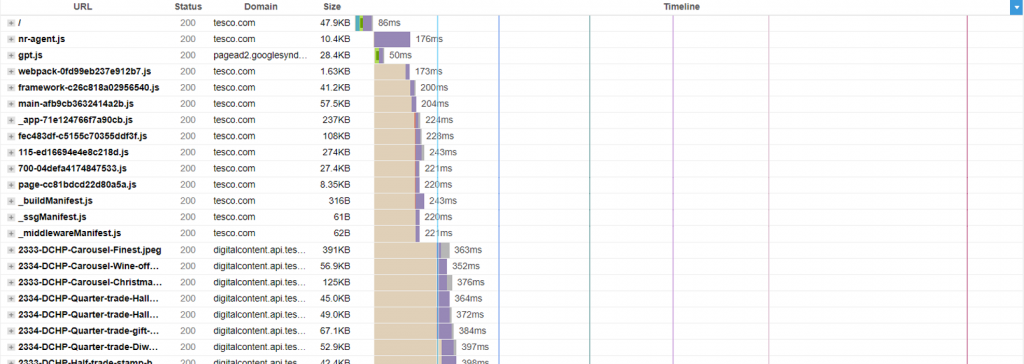
Google Chrome – Inspect Element
If you’d prefer to see the contributors to your site speed from within your browser, you can use the Network tab of the Inspect tool.
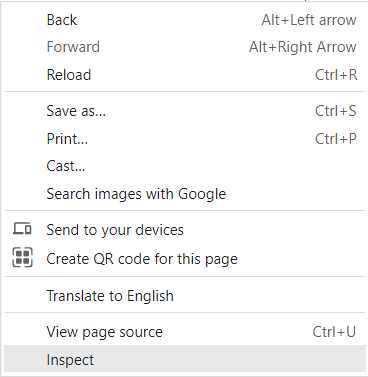
Right-click anywhere on the page and select Inspect. Then, navigate to the Network tab and click on the elements of the page that you want to test. This will show you a waterfall chart for those particular elements.
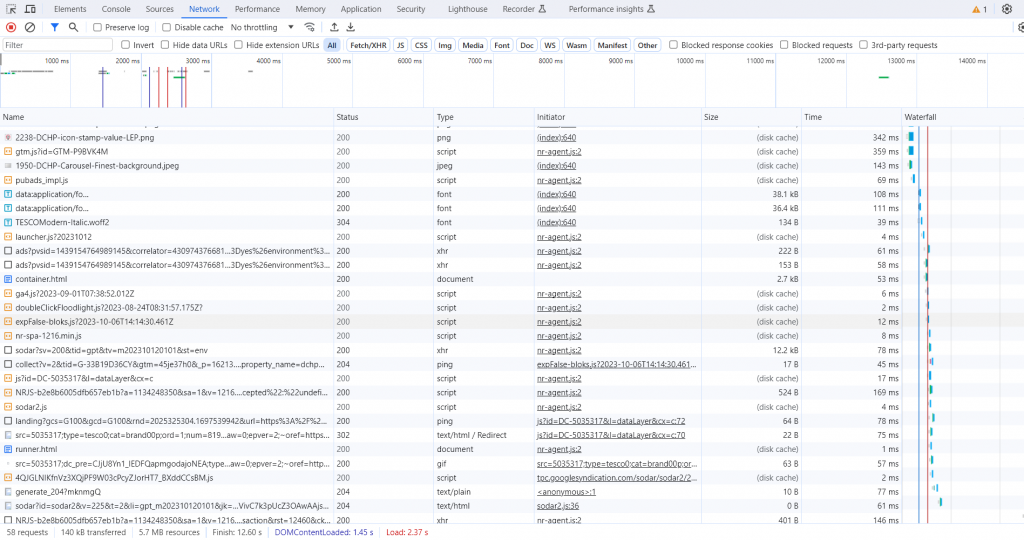
Google PageSpeed Tools
The Google PageSpeed Toolkit will test your site speed and core web vitals for both mobile and desktop. Using simple comparative sliders and percentages it diagnoses performance issues on your site and provides advice on how to speed it up. It also tells you how many seconds could be saved if you follow their optimisation advice.
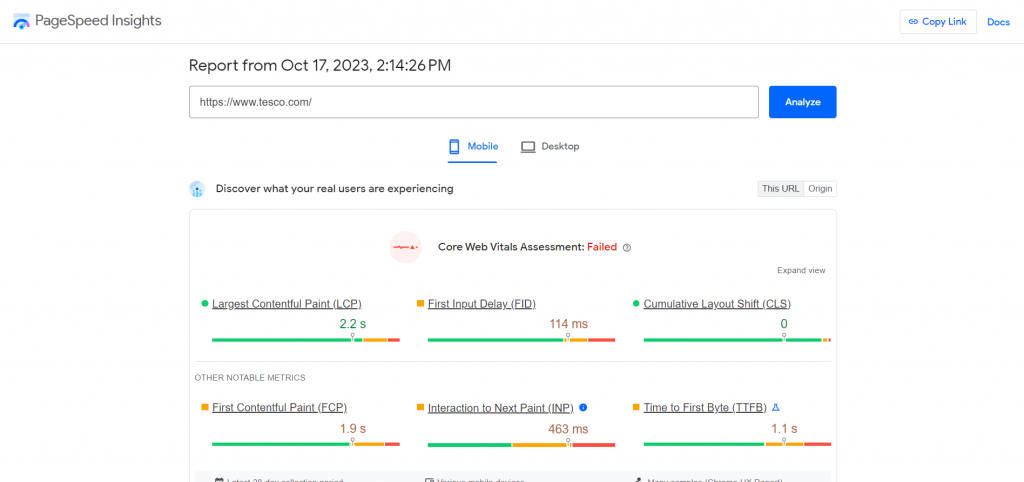
Things to bear in mind
Does all of this mean you need to get a perfect test score?
Well, to answer this question ask yourself; how many times have you visited a website and thought “Wow, this website must score brilliantly on a site speed test!”?
The answer is, most likely, that you haven’t. The thing your visitors care about most is how quickly and easily they’re able to complete their goals, whether that’s making a purchase or reading a blog.
With that said, it’s important to note that site speed tests are synthetic – they use a ‘lab testing’ method. This means that the tool only simulates a user’s experience with your site rather than analysing real visitor data.
It’s important to understand this simulated nature of testing because your results will be based on a hypothetical environment which will not always translate in reality.
These are the three most common environment configurations that could affect the outcome of the test:
Connection Speed
The speed of the connection through which the test is carried out will alter the findings. Consider the difference between a slow 3G connection and ultra-fast wired broadband.
Geographical Location
The proximity between the test site and the website’s server will affect the results. If your site is hosted in a UK data centre you’ll obtain a better speed test outcome from London than you would from India.
Device Used
The score achieved in the speed test will differ from a high-powered desktop computer to a low-end smartphone due to the computing power of the device.
If you think that slow loading times might be putting off potential customers, then we can help! Our free website MOT can help identify the route of your high bounce rate, plus, we can offer expert help and advice for website optimisation. Get in touch today to make your site the best it can be!


